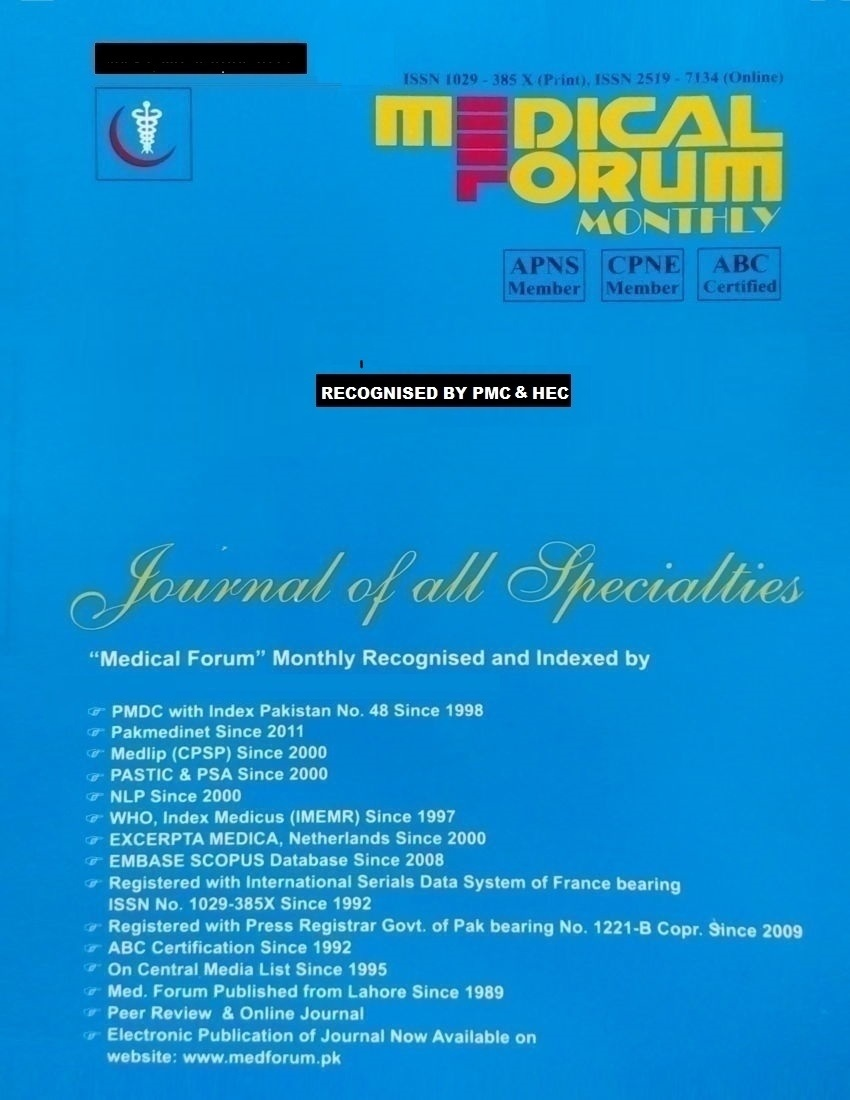
8.Frequency of Lower Limb Amputations in Diabetic Foot Disease at Public Sector Hospital
Zahoor Illahi Soomro1 , Abdul Aziz Sahito2 and Bashir Ahmed Khuhrro2
ABSTRACT
Objective: The aim of this study is to determine the frequency of minor and major amputations in diabetic foot disease patients at different Wagner’s grades of severity and correlate it with the glycemic control.
Study Design: Prospective descriptive study
Place and Duration of Study: This study was conducted at the Department of Orthopaedic Surgery Peoples University of Medical & Health Sciences (PUMHS) Nawabshah from January 2015 to December 2017.
Materials and Methods: Total number of 120 patients of diabetic foot disease were included in this study. According to the Wagner’s classification these patients were divided into six grades. Each patient’s glycemic control was monitored byHbA1c level, fasting blood sugar level, and random blood sugar level. Patients were admitted at medical department and operated at Orthopaedics operation theatre and the outcome of lower limb amputations were determined.
Results: In Wagner’s grade-0, there was no any patient,in Wagner’s grade-I, 12(10%) patients, in Wagner’s gradeII, 26 (21.6%) patients, in Wagner’s grade-III, 28 (23.3%) patients, in Wagner’s grade-IV, 36 (30%) patients, andin Wagner’s grade-V18(15%) patients were included. Out of 120 patients 74 (61.6%) patients were male.50.88 ± 11.06 years was the mean age of the patients. There was history of Diabetes Mellitus of 9 years or longer in 80 (66.7%) patients.NIDDM was found in 112 (93.3%) patients. The most common organism isolated from wounds was Staphylococcus aureus. In grade-I only 2(16.6%) patients underwent minor amputation, while 6 (23.7%) in grade-II, 16 (57.14%) in grade-III, and 16 (44.44%) in grade-IV underwent minor amputation. In grade-III, 6 (21.42%), in grade-IV, 20 (55.55%) and in grade V, all 18 (100%) underwent major amputations. The most common performed procedure was below-the-knee amputation. There were 40 (33.3%) overall frequency of minor amputations and 44 (36.3%) overall frequency of major amputations. There was higher percentage of minor and major amputations in patients with poor glycemic control (p-value = 0.001).
Conclusion: This study concluded that the frequency of amputations in lower limb increases withpoor glycemic control and higher Wagner’s grades of diabetic foot disease patients.
Key Words: Diabetic foot, Amputation, Wagner’s grading
Citation of articles: Soomro ZI, Sahito AA, Khuhrro BA. Frequency of Lower Limb Amputations in Diabetic Foot Disease at Public Sector Hospital. Med Forum 2019;30(4):34-38.
